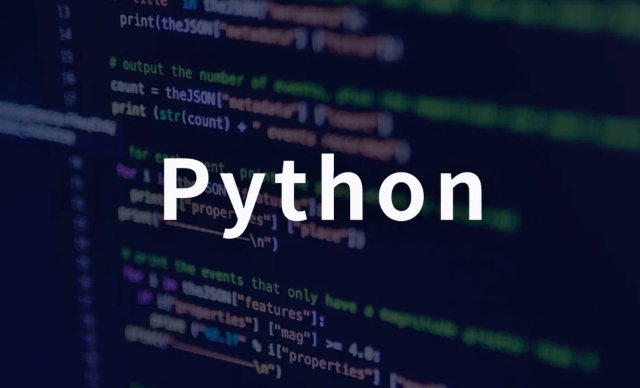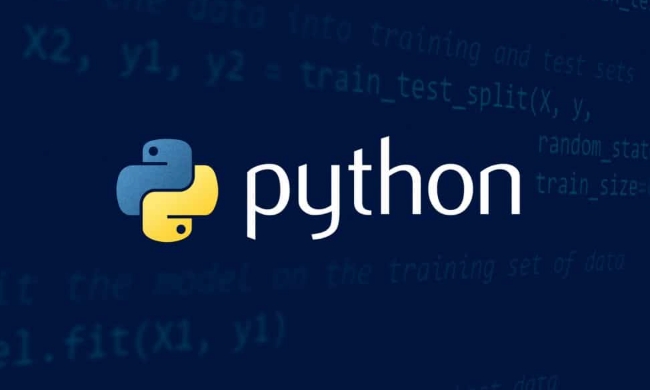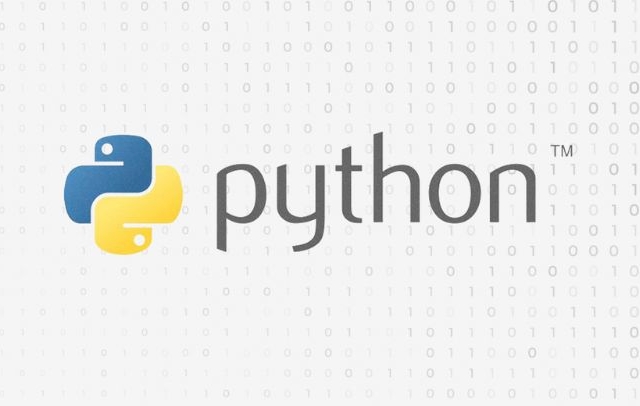Encapsulation in Python is achieved by bundling data and methods within a class and restricting access using naming conventions. 1) It hides internal object details, exposing only necessary parts. 2) It uses single underscore (_) for protected members and double underscore (__) for private members with name mangling. 3) It allows controlled access through methods, enabling input validation. 4) It improves code maintainability, security, and clarity. 5) It's useful when protecting data integrity, hiding internal logic, or building reusable modules.

Encapsulation in Python is the concept of bundling data (variables) and the methods that operate on that data into a single unit, typically a class. It also restricts direct access to some components of an object, which helps prevent unintended interference and misuse.

What Does Encapsulation Do?
At its core, encapsulation hides internal details of an object and only exposes what's necessary. This makes code more maintainable, secure, and easier to debug.
For example:

- A class might have private variables that can't be modified directly from outside.
- Methods can control how those variables are accessed or updated.
Python doesn’t enforce strict access control like some other languages (e.g., Java), but it provides naming conventions to indicate what should be treated as private or protected.
How to Use Encapsulation in Python
You can apply encapsulation by using underscores in variable and method names:

-
Single underscore
_– indicates a protected member (intended for internal use). -
Double underscore
__– indicates a private member (name mangling is applied).
Here’s a quick example:
class Person:
def __init__(self, name, age):
self._name = name # protected attribute
self.__age = age # private attribute
def get_age(self):
return self.__age
def set_age(self, age):
if age > 0:
self.__age = ageIn this case:
-
_nameis accessible but should not be modified directly. -
__ageis harder to access accidentally because Python changes its name internally (to_Person__age).
This way, you control how someone interacts with the data — for instance, validating input before updating the age.
Why Is Encapsulation Useful?
There are several practical reasons why encapsulation matters in real-world coding:
- Data protection: Prevents invalid or unsafe changes to object state.
- Cleaner interfaces: Users of your class don’t need to know how everything works under the hood.
- Easier maintenance: You can change internal logic without breaking code that uses the class.
Imagine a bank account class:
- If balance is public, anyone could just assign a new value.
- With encapsulation, you can make sure any deposit or withdrawal goes through proper checks.
That means fewer bugs and clearer intentions in your code.
When Should You Apply It?
Use encapsulation when:
- You want to protect data integrity.
- Your class has internal logic that shouldn’t be exposed.
- You're building a module or library others will use.
It’s especially important in larger applications where multiple developers may interact with the same codebase.
But remember: Python encourages simplicity. Don’t overdo it unless you really need controlled access.
So basically, encapsulation in Python helps you write safer, cleaner code by hiding complexity and limiting access to internal parts of a class. It's not about enforcing rules strictly, but guiding how things should be used.
The above is the detailed content of What is encapsulation in Python?. For more information, please follow other related articles on the PHP Chinese website!

Hot AI Tools

Undress AI Tool
Undress images for free

Undresser.AI Undress
AI-powered app for creating realistic nude photos

AI Clothes Remover
Online AI tool for removing clothes from photos.

Clothoff.io
AI clothes remover

Video Face Swap
Swap faces in any video effortlessly with our completely free AI face swap tool!

Hot Article

Hot Tools

Notepad++7.3.1
Easy-to-use and free code editor

SublimeText3 Chinese version
Chinese version, very easy to use

Zend Studio 13.0.1
Powerful PHP integrated development environment

Dreamweaver CS6
Visual web development tools

SublimeText3 Mac version
God-level code editing software (SublimeText3)
 Polymorphism in python classes
Jul 05, 2025 am 02:58 AM
Polymorphism in python classes
Jul 05, 2025 am 02:58 AM
Polymorphism is a core concept in Python object-oriented programming, referring to "one interface, multiple implementations", allowing for unified processing of different types of objects. 1. Polymorphism is implemented through method rewriting. Subclasses can redefine parent class methods. For example, the spoke() method of Animal class has different implementations in Dog and Cat subclasses. 2. The practical uses of polymorphism include simplifying the code structure and enhancing scalability, such as calling the draw() method uniformly in the graphical drawing program, or handling the common behavior of different characters in game development. 3. Python implementation polymorphism needs to satisfy: the parent class defines a method, and the child class overrides the method, but does not require inheritance of the same parent class. As long as the object implements the same method, this is called the "duck type". 4. Things to note include the maintenance
 Explain Python generators and iterators.
Jul 05, 2025 am 02:55 AM
Explain Python generators and iterators.
Jul 05, 2025 am 02:55 AM
Iterators are objects that implement __iter__() and __next__() methods. The generator is a simplified version of iterators, which automatically implement these methods through the yield keyword. 1. The iterator returns an element every time he calls next() and throws a StopIteration exception when there are no more elements. 2. The generator uses function definition to generate data on demand, saving memory and supporting infinite sequences. 3. Use iterators when processing existing sets, use a generator when dynamically generating big data or lazy evaluation, such as loading line by line when reading large files. Note: Iterable objects such as lists are not iterators. They need to be recreated after the iterator reaches its end, and the generator can only traverse it once.
 How to handle API authentication in Python
Jul 13, 2025 am 02:22 AM
How to handle API authentication in Python
Jul 13, 2025 am 02:22 AM
The key to dealing with API authentication is to understand and use the authentication method correctly. 1. APIKey is the simplest authentication method, usually placed in the request header or URL parameters; 2. BasicAuth uses username and password for Base64 encoding transmission, which is suitable for internal systems; 3. OAuth2 needs to obtain the token first through client_id and client_secret, and then bring the BearerToken in the request header; 4. In order to deal with the token expiration, the token management class can be encapsulated and automatically refreshed the token; in short, selecting the appropriate method according to the document and safely storing the key information is the key.
 How to iterate over two lists at once Python
Jul 09, 2025 am 01:13 AM
How to iterate over two lists at once Python
Jul 09, 2025 am 01:13 AM
A common method to traverse two lists simultaneously in Python is to use the zip() function, which will pair multiple lists in order and be the shortest; if the list length is inconsistent, you can use itertools.zip_longest() to be the longest and fill in the missing values; combined with enumerate(), you can get the index at the same time. 1.zip() is concise and practical, suitable for paired data iteration; 2.zip_longest() can fill in the default value when dealing with inconsistent lengths; 3.enumerate(zip()) can obtain indexes during traversal, meeting the needs of a variety of complex scenarios.
 What are python iterators?
Jul 08, 2025 am 02:56 AM
What are python iterators?
Jul 08, 2025 am 02:56 AM
InPython,iteratorsareobjectsthatallowloopingthroughcollectionsbyimplementing__iter__()and__next__().1)Iteratorsworkviatheiteratorprotocol,using__iter__()toreturntheiteratorand__next__()toretrievethenextitemuntilStopIterationisraised.2)Aniterable(like
 Explain Python assertions.
Jul 07, 2025 am 12:14 AM
Explain Python assertions.
Jul 07, 2025 am 12:14 AM
Assert is an assertion tool used in Python for debugging, and throws an AssertionError when the condition is not met. Its syntax is assert condition plus optional error information, which is suitable for internal logic verification such as parameter checking, status confirmation, etc., but cannot be used for security or user input checking, and should be used in conjunction with clear prompt information. It is only available for auxiliary debugging in the development stage rather than substituting exception handling.
 What are Python type hints?
Jul 07, 2025 am 02:55 AM
What are Python type hints?
Jul 07, 2025 am 02:55 AM
TypehintsinPythonsolvetheproblemofambiguityandpotentialbugsindynamicallytypedcodebyallowingdeveloperstospecifyexpectedtypes.Theyenhancereadability,enableearlybugdetection,andimprovetoolingsupport.Typehintsareaddedusingacolon(:)forvariablesandparamete
 Python FastAPI tutorial
Jul 12, 2025 am 02:42 AM
Python FastAPI tutorial
Jul 12, 2025 am 02:42 AM
To create modern and efficient APIs using Python, FastAPI is recommended; it is based on standard Python type prompts and can automatically generate documents, with excellent performance. After installing FastAPI and ASGI server uvicorn, you can write interface code. By defining routes, writing processing functions, and returning data, APIs can be quickly built. FastAPI supports a variety of HTTP methods and provides automatically generated SwaggerUI and ReDoc documentation systems. URL parameters can be captured through path definition, while query parameters can be implemented by setting default values ??for function parameters. The rational use of Pydantic models can help improve development efficiency and accuracy.






